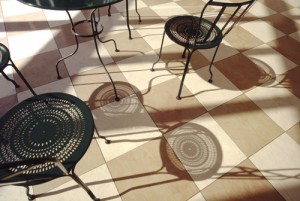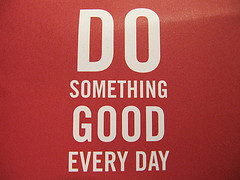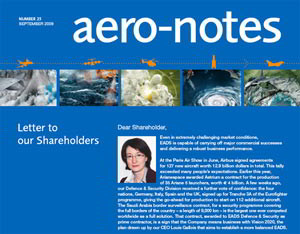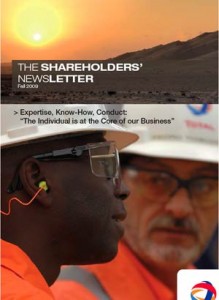I stumbled across Rearranging the Chairs as an Act of Leadership and got to thinking. The gist of this intriguing post (by management consultant CV Harquail) is that “how we sit is how we interact.” People sitting in a circle interact differently than people sitting in a square, or on two sides of a desk.
That feels true—but not in a simple way. I can remember being in a group interview (three team members evaluating me as a potential fourth) at a round table. In that instance, the circle didn’t feel communal a bit. In fact it seemed like my three interviewers had me surrounded and were closing in for the proverbial kill. Would it have been different without the table? Possibly. Or it may be that three against one is always unbalanced. Or it may have been the personalities of those three people.
(Although I did get the engagement, my sense of unbalance wasn’t wrong. I learned later that I was a hit with two team members, a wide miss with the third.)
In any event, “moving the chairs” may not be about physically arranging the seating. Maybe it’s just a way of putting some thought into the environment, and the dynamics you want for a group situation. Does anyone really think about the best space for an interview—or just the convenient (i.e., available) space? A large proportion of interviews seem to take place in empty meeting rooms, with interviewer and interviewee perched on two of twenty chairs; or in a cubbyhole with two chairs and a bare table; or in someone’s imposing office, with a big chair, a little chair, and a yard of desk in between.
None of those arrangements seems very conducive to authentic communication.
It’s likely that most companies could do a better job of arranging the interview environment if they just gave it a little thought. Which would only happen if they thought it was important—so we’ll have to wait for a study that shows better hires come from better interview ambience. Until then, there’s the phone.
Seriously. Many companies are concluding that first (and often second) interview rounds are not only more efficient by phone, but also more productive. As noted entrepreneur Guy Kawasaki points out in a New York Times “Corner Office” conversation, “when you interview in person, many variables come into play that have nothing to do with competence.” Since lots of factors can “sidetrack” the interviewer in a person-to-person meeting, Kawasaki favors a process that begins by asking every candidate a checklist of questions on the phone.
So moving the chairs could also be removing the chairs. There’s not one perfect seating plan, but it does matter who sits where.
(Thanks to globevision for the charming chairs.)

 Last week, my fellow blogger,
Last week, my fellow blogger, 


 The widespread Toyota recall that dominated much of the news in January 2010 did not go unnoticed by Toyota’s leadership team. In an effort to regain trust among Toyota customers, the Toyota marketing team rolled out an integrated plan that involved both traditional marketing and social media marketing tactics.
The widespread Toyota recall that dominated much of the news in January 2010 did not go unnoticed by Toyota’s leadership team. In an effort to regain trust among Toyota customers, the Toyota marketing team rolled out an integrated plan that involved both traditional marketing and social media marketing tactics.